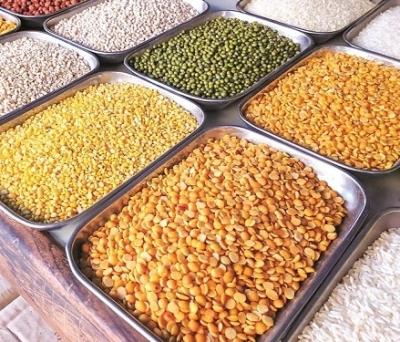
Cabinet Gives Go-Ahead For Rs 11,440 Crore Plan To Achieve Self-Reliance In Pulses
The landmark initiative aimed at boosting domestic production and achieving self-sufficiency in pulses will be implemented over a six-year period from 2025-26 to 2030-31.
The Pulses Mission is expected to benefit around 2 crore farmers with the supply of better seeds, post-harvest infrastructure and 100 per cent assured procurement of tur, urad, and masoor pulses from growers at the Minimum Support Price during the next 4 years, according to an official statement.
Pulses hold special importance in India's cropping systems and diets. India is the world's largest producer and consumer of pulses. With rising incomes and standard of living, pulses' consumption has increased. However, domestic production has not kept pace with demand, leading to a 15–20 per cent increase in pulses imports.
To make improved varieties widely available, 126 lakh quintals of certified seeds will be distributed to pulse-growing farmers, covering 370 lakh hectares by 2030-31.
The Mission also seeks to expand the area under pulses by an additional 35 lakh hectares by targeting rice fallow areas and other diversifiable lands, supported by promoting intercropping and crop diversification. For this, 88 lakh seed kits will be distributed free of cost to the farmers.
To reduce this import dependency, meet rising demand, maximise production, and enhance farmers' income, a 6-year "Mission for Aatmanirbharta in Pulses" was announced in the FY 2025-26 Budget. The Mission will adopt a comprehensive strategy covering research, seed systems, area expansion, procurement, and price stability.
The emphasis will be placed on developing and disseminating the latest varieties of pulses which are high in productivity, pest-resistant and climate-resilient. Multi-location trials will be carried out in major pulse-growing states to ensure regional suitability.
By 2030-31, the Mission is expected to expand the area under pulses to 310 lakh hectares, increase production to 350 lakh tonnes, and raise yield to 1130 kg/ha. Alongside productivity gains, the Mission will generate significant employment.
In addition, to ensure availability for premium quality seeds, states will prepare five-year rolling seed production plans. The breeder seed production will be supervised by the ICAR Foundation, and certified seed production will be done by state and central level agencies, and closely tracked through the Seed Authentication, Traceability & Holistic Inventory (SATHI) portal.
This will be complemented by convergence with the soil health programme, Sub-Mission on Agricultural Mechanisation, balanced fertiliser use, plant protection, and extensive demonstrations by ICAR, KVKs, and state Agriculture Departments to promote best practices.
Capacity building of farmers and seed growers will be taken up through structured training programmes to promote sustainable techniques and modern technologies.
To strengthen markets and value chains, the Mission will help develop post-harvest infrastructure, including 1,000 processing units, thereby reducing crop losses, improving value addition, and increasing farmer incomes. A maximum subsidy of Rs 25 lakh will be available for setting up processing and packaging units.
The Mission will adopt a cluster-based approach, tailoring interventions to the specific needs of each cluster. This will enable more effective allocation of resources, enhance productivity, and promote geographic diversification of pulse production.
A major feature of the Mission will be to ensure maximum procurement of tur, urad, and masoor under the Price Support Scheme (PSS) of PM-AASHA. NAFED and NCCF will undertake 100 per cent procurement in participating states for the next four years from farmers who register with these agencies and enter into agreements.
Additionally, to safeguard farmer confidence, the Mission will establish a mechanism for monitoring global pulse prices.
The mission seeks to achieve the goal of Atmanirbharta (self-reliance) in pulses, reduce import dependency and conserve valuable foreign exchange while boosting farmers' incomes. This mission will also accrue significant environmental benefits in the form of climate resilient practices, improved soil health and making productive use of crop fallow areas.

Legal Disclaimer:
MENAFN provides the
information “as is” without warranty of any kind. We do not accept
any responsibility or liability for the accuracy, content, images,
videos, licenses, completeness, legality, or reliability of the information
contained in this article. If you have any complaints or copyright
issues related to this article, kindly contact the provider above.


















Comments
No comment